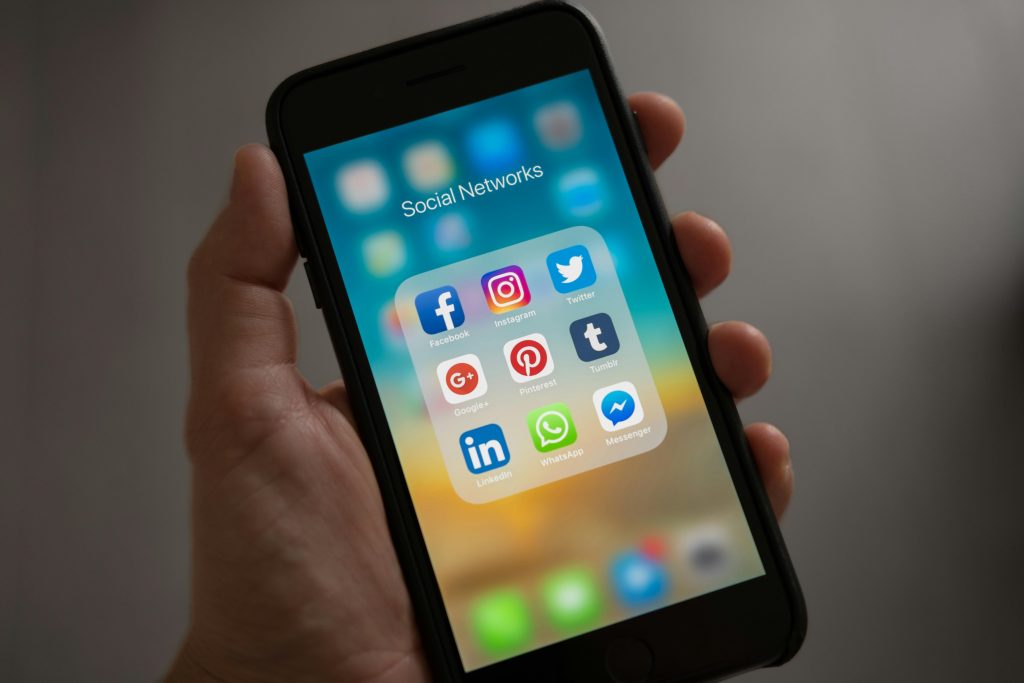Supervillains of Learning and How to Conquer Them
“Our smart devices are making us duller”
“We live in the era of smartphones and stupid people”
“Smartphone is definitely smarter than us to be able to keep us addicted to it”
“The quotes point out a common problem: our excessive reliance on technology. As students, this reliance worsens our situation rather than helping us.
In his book, Limitless: Upgrade Your Brain, Learn Anything Faster, and Unlock Your Exceptional Life, Jim Kwik refers to this phenomenon as the Supervillains of Learning. Much like comic book supervillains, technology wasn’t initially intended to be harmful. It still isn’t inherently bad. The responsibility lies with us, the users, to determine how to utilize it to our benefit.
To do this, we must recognize and defeat the 5 supervillains of learning.
Supervillains of Learning
1. Digital Deluge
The simple definition of digital deluge is information overload.
We live in the information age where we can get anything we desire with a few clicks. It is also frequently stated that “Data is Life,” and when we do not have data to access the internet, we always feel as if we are missing out on something. That emotion is the result of a digital deluge.

We are prone to overload as a result of the ease with which information is available. There’s simply too much information to process.
Let’s look at some numbers.
In comparison to the 15th century, the average individual now consumes as much data in a single day as the average person in the 1400s did in a lifetime.
According to science, the average individual now consumes about three times as much information as they did in 1960.
The New York Times also states that the average computer user visits 40 websites each day and can switch programmes 36 times per hour.
Now, let’s bring it home.
You’re presumably reading this on a digital gadget; when was the last time you dropped your device and then did something else?
How bitterly did you complain during a network outage because you couldn’t access the internet? I’m guessing very bitterly.
We’ve grown so accustomed to being on our devices that we can’t conceive being away from them for minutes if not seconds. This happens even when we’re not doing something significant. We pass the time by idly scrolling while watching TV or lying in bed.

This is a problem. The negative effects of digital deluge include but are not limited to the following:
- Stress and Anxiety
- Reduced efficiency
- Bad decision-making
Now, how can we resist digital deluge after we’ve identified it?
How to Conquer Digital Deluge
The response to the digital deluge is simple: do the opposite. Learn to take breaks from your digital devices.
This is commonly referred to as “white space”.
Scheduling white space throughout the week can assist in mitigating the consequences of digital deluge. This time should be spent resting. It doesn’t matter if you spend ten minutes meditating, going for a stroll, or doing some light reading; what matters is that you’re not actively working or staring at a gadget.
This improves the efficiency with which our default network functions.
Have you ever gone for a stroll and the solution to an issue suddenly became clear? That is the default network at work. Our brain is continually busy, attempting to answer questions, generate ideas, and solve problems; but, we cannot simply push these activities. Allowing our brains the time and space they require will boost our productivity.
2. Digital Distraction
According to Lisa Keer, a certified health & wellness coach at Massachusetts General Hospital, digital distraction refers to the interference caused by digital devices in our lives, leading to decreased productivity, negative impacts on our mental and emotional health, and even physical consequences.

If you were given $1 for every time you pressed your phone while talking to someone, you’d be a billionaire by now. How about the times you reached for your device while working on a project?
A 2019 survey discovered that the average American checks their phone 96 times per day. That is once every ten minutes. Even more concerning, in 2020, that number increased to more than 160 times each day, rising to a staggering 262 times per day in 2021. That is once every four minutes. In less than two years, we’ve more than doubled the number of times we stare at our smartphones.
A variety of factors contribute to the surge in digital distraction. The continual connectedness provided by cell phones and the internet makes it difficult to disconnect from the digital world. Social media sites, emails, instant messaging apps, and a slew of other applications vie for our attention 24 hours a day, seven days a week, both at work and at home. As previously said, the fear of missing out is a powerful driver, compelling us to constantly check our devices for the newest news, trends, and social connections.
Despite this, digital distraction has a far-reaching impact on our mental and emotional well-being. The most common is the loss of concentration and focus. Continuous digital disruptions can hinder our ability to focus on crucial tasks. The continual shifting of our attention from one notification to another fractures our cognitive processes, resulting in lower productivity and higher stress.
Thankfully, there’s hope. Lisa Keer outlines 7 strategies we can use to tackle digital distraction and regain control over our lives.
How to Conquer Digital Distraction
1. Digital Detox: Take regular breaks from digital devices to recharge. This could mean short breaks throughout the day or digital-free weekends.
2. Mindful Consumption: Use technology mindfully by setting specific times for checking emails and social media. Avoid using devices before bedtime to improve sleep quality.
3. Notifications Management: Disable unnecessary notifications on devices to reduce interruptions. Schedule specific times to check messages and updates.
4. Create Technology-Free Zones: Designate certain areas of your home or workspace as tech-free zones. For example, keeping bedrooms free from technology can ensure uninterrupted rest and recovery.
5. Prioritize Face-to-Face Interactions: Spend quality time with loved ones without screens. Engage in meaningful conversations and activities like walking, enjoying coffee, or exploring nature.
6. Digital Well-Being Tools: Make use of digital well-being features on smartphones and apps to track and limit screen time. These tools offer insights into digital habits and help set usage goals.
7. Write a Tech Vision Statement: Craft a vision statement outlining how, why, and when to use technology. Define desired benefits like staying connected or supporting curiosity, while also setting boundaries to avoid negative impacts like excessive use or neglecting the real world.
3. Digital Dementia
According to neuroscientist Manfred Spitzer, digital dementia is the overuse of digital technology that results in the breakdown of our cognitive abilities.
When was the last time you needed to remember a phone number? Or when was the last time you had to navigate a location without using a GPS? How frequently do you forget someone’s name shortly after they tell you it?

It is frequently stated that our smartphones are beginning to make us stupid. We rely on technology to accomplish things for us that we should be able to do ourselves.
Although using technology in this manner is beneficial in that it frees up brain space for other tasks, the problem is that the less we use our short-term memory, the more those pathways weaken. And because our long-term memory storage relies on and strengthens each time we recall things, they suffer as well. Memory, like anything, is a muscle. The less we use it, the weaker it gets.
There have been various studies that show the impact of digital dementia.
In one 2023 study, researchers discovered that excessive screen use negatively impacts executive functioning and working memory, among other alterations, in both children and teenagers.
Another big study, published in 2023, investigated the link between screen-based sedentary activities and dementia risk in over 462,000 people. In this study, the researchers evaluated both computer use and television consumption.
The study’s findings revealed that participants who spent more than 4 hours per day on screens were more likely to develop vascular dementia, Alzheimer’s disease, and all-cause dementia. Furthermore, larger levels of daily screen time were associated with physical alterations in certain parts of the brain.
This demonstrates the need for a concerted approach to defeating this supervillain.
How to Conquer Digital Dementia
In his article on the Neurology Centre for Epilepsy and Seizures blog, Samus discusses two preventive methods for digital dementia. They include;
1. Set realistic limits for screen time:
As previously stated, excessive screen usage has been linked to impaired language abilities, cognitive function, and social interaction. However, limiting screen time promotes more face-to-face connection, enhanced language abilities, and increased physical activity, all of which are necessary for healthy growth.
2. Include more physical activities in your schedule:
Whether it’s a stroll, yoga, or a workout, scheduling at least 30 minutes of physical activity away from our phones each day is critical for our physical and emotional well-being. This is because physical activity reduces stress, increases energy, and minimizes reliance on screens. The goal here is to find an engaging exercise that can be sustained as a routine. Whether it’s dance, cycling, or sports, prioritize and include enjoyable activities in your daily routine.
Additionally, we want to practice memorizing knowledge, especially if it is something we use regularly.
3. Digital Deduction
Digital deduction is the act of drawing conclusions from already-made laws, available references, or sources.
We are in times where all answers to problems can be obtained at the click of a mouse or swipe of a finger. Times where there is a heavy reliance on technology to solve every question.
What happens in his situation is either one of two things: we become overly reliant on certain sources, letting their opinions form our own. Or, we go into a search expecting certain answers and stop looking when our opinions are confirmed.
In either scenario, we’re dulling our critical thinking and reasoning skills. This eventually impacts our problem-solving abilities and overall executive functionality. When we become reliant on obtaining digital information, we stop taking the time to solve problems or think through difficult situations on our own.

Can you remember the last time you critically analyzed a situation without employing the use of the Internet? Or the last time you tried to do your assignment without jumping to Google first?
Nowadays, if you want to know the implications of an event or a trend, a quick online search will provide endless amounts of analysis.
The availability of information about everything also means that there is a wide range of opinions about everything. However, it is important to know that these opinions were formed by other people and posted online. Hence, by relying on these sources of information, we are letting other people impose their opinions on us.
Jim Kwik explains This quite simply by asking a question:
“How do you feel when someone tries to impose their thinking on you? If a family member, friend, or colleague came up to you and said, “Don’t think about this; here’s your opinion”. How would you react?
A lot of people, if not all, are not very keen on people forcing their own opinions on them. Yet, when we immediately reach for the internet to provide us with information, we’re essentially inviting the same thing.
How to Conquer Digital Deduction
Digital deduction can be defeated by actively working to analyze situations without using technology or outside resources first. By taking the time to exercise our memory, we may find we know more about a subject than we initially thought. And if we have to look up and verify facts, we should seek out new sources of information rather than relying on a few preferred resources.
We can further exercise our critical thinking and reasoning skills by facing information we disagree with. Do we disagree because that’s the conclusion we reached based on our knowledge? Or are we relying on someone else’s opinion? When it comes to topics we do need to research, we should find sources of information that cover all facets of the problem so that we can evaluate them equally. Even if we end up with the same result we began with, deductive processing, reasoning, and evaluation will strengthen our overall cognitive functionality.
5. Digital Depression
Digital depression is characterised as a state of restlessness, discontent, anxiety, loneliness, and worthlessness produced by excessive usage of digital media.
It is a type of mental disorder that manifests itself in a variety of ways.
One way it arises is by constantly browsing through social media accounts. The selected photographs and highlight reels provided on sites such as Instagram generate unreasonable expectations and encourage feelings of inadequacy. Simply put, we start comparing ourselves to the glossy, beautiful lifestyles we witness on social media, which adds to digital sadness.

A 2017 study found that young adults who utilise media are more likely to feel lonely and depressed.
Have you ever compared yourself to others online, hoping you were like them? How about seeking acceptance and connection from others? That’s digital depression in action.
Other signs that you may be suffering from digital depression include:
- Checking your social media accounts often throughout the day
- Feeling worried or uncomfortable when unable to check social media
- Using social media as an escape from reality.
The impact of digital depression on an individual is significant and should not be ignored. They include, but are not limited to the following:
- Feelings of Failure and Inadequacy: Comparing one’s highlight reel to that of others might cause discontent and a sense of worthlessness.
- Emptiness and Discontent: Success stories that don’t acknowledge hard labour might lead to disappointment.
- Fear of Missing Out (FOMO): Constantly comparing one’s life to that of others online can cause melancholy and anxiety.
- Causing Inadequacy: Comparing one’s reality to idealised depictions on social media can lower self-esteem.
- Mental and Emotional Distress: Excessive social media usage can cause sadness, anxiety, and discontent.
How to Overcome Digital Depression
To address digital depression, a multimodal strategy is required, including teaching digital literacy, encouraging good screen usage habits, and offering mental health support options. They can be organised as follows:
1. Set boundaries: To avoid bad effects on mental health, know your boundaries, recognise triggers, and take breaks as needed.
2. Monitor Moods: Be aware of how social media impacts your mood, and get assistance from a therapist or counsellor if necessary to make good adjustments in your usage patterns.
3. Seek Support: If you are battling with mental health difficulties, seek help from accessible services.
4. Remember Reality: Recognise that social media frequently shows selected material, and that everyone has terrible days. Take pauses and participate in things that offer you delight.
5. Strive for Balance: Maintain a positive online profile while prioritising living in the present moment to avoid the negative impacts of social media use.
6. Use Technology Responsibly: Recognise the potential and difficulties that the digital world presents, and aim to use technology responsibly for your overall well-being.
Conclusion
The first step in defeating the Supervillains of Learning is to recognise that technology, as a whole, is not a supervillain—it is a tool. We may utilise it to improve our lives and education. As a result, what matters is how we control and use it.
Will you make active efforts to defeat the Supervillains of Learning? Let us know in the comments section.


